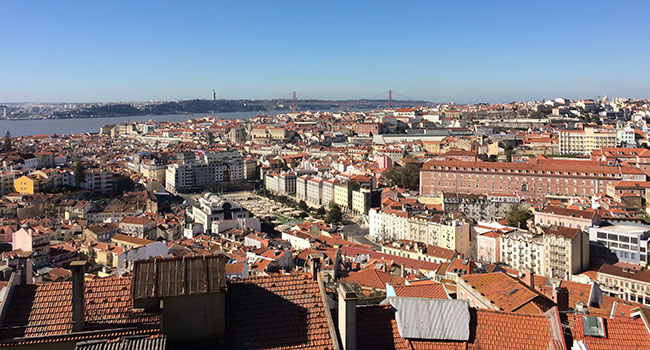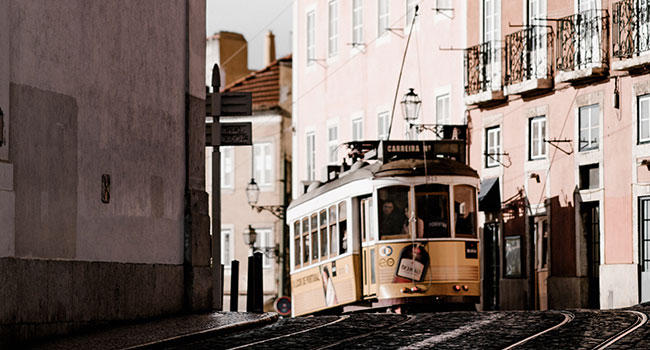 Lisbon is an overlooked European capital. Tourists tend to flock to Paris, Rome, London, but that little country on the edge of Europe? Portugal is not always on major tourist routes, but there is plenty to see there.
Lisbon is an overlooked European capital. Tourists tend to flock to Paris, Rome, London, but that little country on the edge of Europe? Portugal is not always on major tourist routes, but there is plenty to see there.
If you’re looking for a trip to Europe, but you’re hoping to stick to a tight travel budget, you might want to give Lisbon a look. Portugal has always cost less than other destinations in Europe.
So what is there to see in Portugal’s capital city? Well, to start with, the city itself. It is compact and teems with everyday life. Its pleasures are its street life and setting: Lisbon was built on seven hills by the Tagus River which spills into the Atlantic. It doesn’t seem overrun with tourists.
Lisbonites shop in the Chiado and Bairro Alto districts on one of the hillsides above the downtown area. They party and listen to fado, a music genre which can be traced from the 1820s, in the alleys of the Alfama on the opposite hillside. The Bairro Alto also has a vibrant nightlife.

Lisbon, Portugal. Photo by WeSetupYourWebViewApp
The Baixa, the downtown district, runs between the two hills from Rossio Square inland to Comericio Square, the large, much loved plaza on the river. It is the main shopping and banking district, stretching from the riverfront to the Avenida da Liberdade. There are elegant squares and pedestrianized streets, as well as lots of cafes and shops.
Lisbon has history too. It bills itself as the City of Explorers. Prince Henry the Navigator set the course for exploration in the 15th century. Vasco da Gama sailed from the city’s Belem neighborhood. Lisbon’s glory days were the 15th and 16th centuries when she sent da Gama and other explorers out to “discover the world.”
Much of the city was rebuilt after it was flattened by an earthquake in the 18th century. The Chiado area also suffered a devastating fire in the 1980s, but it has been rebuilt and reborn. Actually, many areas of the city have been rebuilt through the years after being devastated by earthquakes and fires. Find pockets of the old grandeur in the Belem district, the Alfama, and the Bairro Alto.

A tram in Lisbon, Portugal. Photo by Annie Spratt
Lisbon is a great city for tourists because of its compact size. Walk the downtown. Take the Santa Justa Elevator (also called the Elevator of Carmo or Carmo Lift) up to the Bairro Alto. This elevator was designed by a student of Eiffel and built in the early 1900s.
Climb back into history through the medieval alleys of the Alfama on the opposite hill. This is possibly the city’s most emblematic quarter.
Get lost wandering narrow streets with overhanging laundry. You will find stone staircases that open suddenly onto terraces with spectacular views over the red tile rooftops to the Tagus River. Stop in little local restaurants for a bite to eat.
At night listen to real, not-for-tourists, Fado (music). Admire the Azulejos de Lisboa, the blue tiles that decorate nooks and crannies at every turn. There are strategically-placed miradouros (or viewpoints) that offer breathtaking panoramas over the city. At the top of the hill is the Castle of St. George (the Castelo de Sao Jorge)—all that is really left is the walls, but it has a great view out over the city.
Ride the colourful old yellow trams around the city. Not yet mentioned are the museums like the Ancient Art Museum (which is Portugal’s National Gallery) or the Calouste Gulbenkian Museum, two of Lisbon’s best. And since we’ve only mentioned historic Belem in passing, we’ll have to leave that for later.
Let’s just say if you’re want a great travel experience but you’re counting your pennies, you could be pleasantly surprised with how far you can stretch your travel budget in Lisbon.
BECOME A TRAVEL LIKE THIS CONTRIBUTOR
Contact us for details.
The views, opinions and positions expressed by columnists and contributors are the author’s alone. They do not inherently or expressly reflect the views, opinions and/or positions of our publication.

